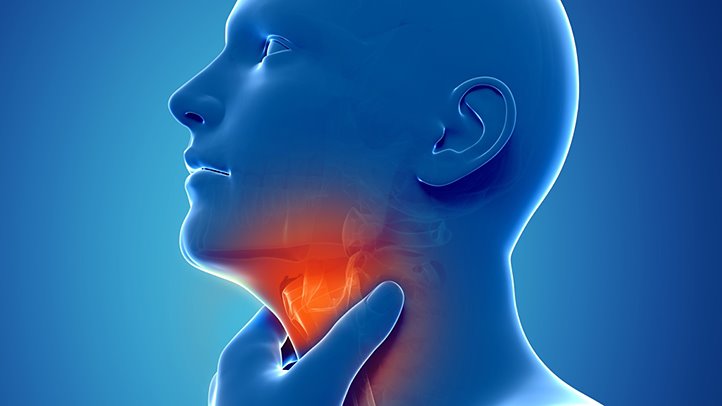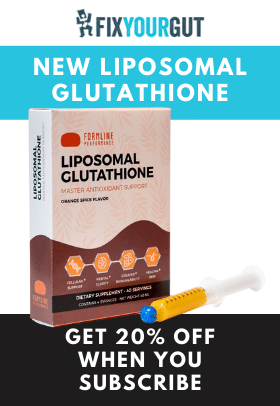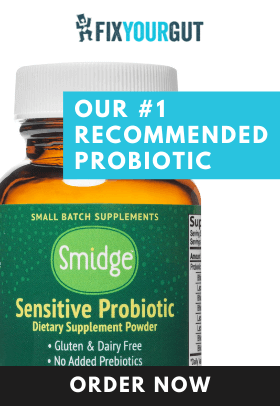Eosinophilic esophagitis is a medical condition that affects more people than initially believed. Eosinophilic esophagitis was once thought of as only being a rare case-reportable medical condition. Eosinophilic esophagitis presents itself as many different conditions because it has a wide variety of upper gut symptoms. Sadly, the condition occurs quite frequently in young children, making it more challenging to diagnose and achieve remission. What are the symptoms of eosinophilic esophagitis, the possible causes, and how might someone suffering from the condition hopefully find relief?
Eosinophilic Esophagitis
Eosinophilic esophagitis (EoE) is a recently recognized medical condition that gained recognition during the 1990s. “Recently, a systematic review of 13 population-based studies confirmed a higher incidence (7.2 per 100,000 person-years) and pooled prevalence (28.1 cases per 100,000 inhabitant-years) comparing studies before and after 2008. Moreover, the incidence and prevalence of EoE were higher in adults than in children, and the incidence of EoE was higher in the United States than in Europe,” African-American children were more likely to present earlier with failure to thrive and Caucasian children were more likely to present with dysphagia and esophageal rings. EoE tends to affect males more often (around seventy-two percent), and males are more likely to have esophageal strictures. Eosinophilic esophagitis is a condition that has a wide variety of upper gut symptoms.
Symptoms of the condition include:1 2 3
- Chest pain
- Difficulty swallowing (dysphagia)
- Esophageal fibrosis
- Esophageal histological changes
- Esophageal inflammation
- Esophageal strictures
- Food becoming stuck in the esophagus (impaction)
- Heartburn sensations
- Nausea
- Poor growth (failure to thrive)
- Stomach or esophageal pain
- Th2 dominance (histamine intolerance)
- Vomiting
- Weight loss
Because many of the above symptoms of eosinophilic esophagitis overlap with gastroesophageal reflux disease (GERD) symptoms, many people are initially diagnosed with GERD by their healthcare professional. People suffering from EoE do not typically respond to anti-GERD therapies, including anti-reflux dietary modifications, lifestyle changes, and medication. Eosinophilic esophagitis is usually diagnosed from an endoscopy esophageal tissue biopsy when anti-GERD therapies fail to bring relief. A healthy esophagus is typically devoid of eosinophils. However, eosinophils are densely within the epithelial lining of the esophagus for people suffering from EoE. Eosinophils are a type of white blood cell (make up one to three percent of the bodies total white blood cells) that when activated produce many lipid mediators (eicosanoids and prostaglandins), elastase enzymes, growth factors (vascular endothelial growth factor, for example), and release many different cytokines (mainly favoring Th2 dominance) to regulate our immune system, inflammatory responses, and to help overcome infections (mainly parasitic and bacterial infections). Eosinophils also activate mast cells to release histamine. If you have an increased concentration of eosinophils development or worsening of histamine intolerance, mast cell activation disorders, allergies, and asthma occurs.4 5
The Many Causes of Eosinophilic Esophagitis. Is There a Link Between Dysbiosis, Eosinophilic Esophagitis, and Celiac Disease?
Many different known factors contribute to someone developing eosinophilic esophagitis which include:6 7
- Antibiotic use
- Cesarean section birth
- Celiac disease
- Esophageal microbiome dysbiosis
- Genetics
- Having other health conditions, including autosomal dominant hyper-IgE syndrome, celiac disease, Ehlers-Danlos syndrome, Loeys-Dietz syndrome, Netherton’s syndrome, PTEN hamartoma tumor syndrome, and SAM syndrome. Most of these conditions cause disruptions to the epithelial barrier of the esophagus or increased IgE leading to increased eosinophil activation.
- Increased production of IL-13 in the esophagus leading to the increased attraction of eosinophils to the esophagus
- Not being breastfed as an infant
- Preterm birth
- Reduction in esophageal production of SPINK7 (serine peptidase inhibitor, kazal type 7)
Interestingly enough, most of the factors that increase your chances of developing eosinophilic esophagitis seem to negatively affect our microbiome, making me believe that EoE is primarily dysbiosis driven disease. We know that premature births, Cesarean section births, not being breastfed, having celiac disease, and frequent antibiotic use as a child causes a reduction of microbiome diversity and causes dysbiosis. Many bacteria have been implicated as causing EoE reflecting microbiome dysbiosis in the esophagus, larynx, pharynx, and within the oral cavity for people suffering from the disease. The Proteobacteria Haemophilus (a histamine producer) is elevated in these areas of the body in many children suffering from EoE. “Enrichment of Haemophilus in the hypopharyngeal region has been associated with an increased risk of other conditions characterized by eosinophil-mediated allergic inflammation such as recurrent wheezing and asthma in children. Similarly, an abundance of Haemophilus in the sinonasal cavity has been demonstrated in patients with chronic rhinosinusitis, and an abundance of Haemophilus in the sputum has been associated with bacterial exacerbations of chronic obstructive pulmonary disease.” Lower Lactobacillus colonies were found in children suffering from EoE. Adults with EoE had elevated colonies of Actinomyces and Streptococcus (histamine producer).8 9 10 11 12 13 14 15 16 17
There is a strong correlation between developing EoE if you also have celiac disease. A diagnosis of celiac disease increases the risk of developing EoE by at least twenty-five percent. Multiple studies, however, have disproven a genetic link between the two conditions in that the celiac disease genetic polymorphisms (HLA-DQ2/DQ8) do not seem to occur in people suffering from only EoE.18 19
“Although the possible relationship between eosinophilic esophagitis (EoE) and celiac disease (CD) has been previously suggested, they are 2 clinically and histologically distinct disorders of upper gastrointestinal tract involving different anatomy and physiology. Immunologically, CD is a TH1-mediated response, triggered by gluten-derived peptides, that is activated in genetically susceptible individuals, whereas EoE has been shown to be a TH2-mediated disorder that is associated with immunoglobulin E– and non–immunoglobulin E-mediated food allergies. Traditionally, TH1 and TH2 immune responses have been considered mutually antagonistic, but recent molecular studies have suggested that autoimmune and atopic diseases share risk factors that increase the propensity of the immune system to generate both TH1- and TH2-mediated inappropriate responses to nonpathological antigens. These findings seem to suggest a more generalized defect of immune regulation than a casual association between CD and EoE.”20
I find the above-referenced paragraph very interesting because I suffered from Th1 dominance when I had H. pylori dysbiosis and celiac disease. However, it does appear that in people that have both EoE and celiac disease, they are likely suffering from Th1 and Th2 dominance. Most of the time, some who have chronic health issues suffer from either Th1, Th2, or Th17 dominance, but it does make sense for someone suffering from eosinophilic esophagitis to have both. Suffering from inflammation (Th1) and histamine reactions (Th2) within different parts of their body due to microbial dysbiosis and the histamine they produce.
“According to one theory, increased intestinal permeability secondary to CD may facilitate the exposure of the intestinal immune system to various antigens and an upregulated immune response, which, in turn, causes intestinal inflammation and damage. There are several food antigens that have been implicated in EoE, similar to the role gluten plays in CD, which is why the question exists of whether these two conditions are associated. And, because wheat can also trigger EoE, several studies have investigated the relationship between these two disease entities. It has been suggested that eosinophilic infiltration of the esophagus may be a manifestation associated with gluten exposure in a small population of patients with CD and could also be caused by CD itself.”21
In the past few years, researchers discovered that a protein, SPINK7, was absent from esophageal biopsies taken from adults and children with active EoE. SPINK7 was, however found in the biopsies taken from healthy people. “SPINK7 as a homeostatic, anti-inflammatory regulator of esophageal epithelium. We demonstrate that SPINK5 and SPINK7 are constitutively produced by differentiated esophageal squamous epithelium. Loss of SPINK7 is sufficient for induction of proinflammatory responses including (i) loss of barrier integrity including formation of dilated intercellular spaces, absence of microplicae, increased paracellular permeability, and reduced transepithelial/transendothelial electrical resistance (TEER); (ii) epithelial acantholysis including disruption of the adherens junction proteins E-cadherin and DSG1; (iii) defective epithelial cell differentiation highlighted by loss of FLG expression; (iv) promotion of the EMT marker vimentin and metalloproteinases; and (v) induction of an innate transcript signature that overlaps with allergic inflammation including processes regulated by IL-13 and marked cytokine release. We identify uPA as a mediator of eosinophil activation downstream from the loss of SPINK7, at least in vitro. Finally, we substantiate these findings by identifying genetic epistasis between PLAU and TSLP proteins.“If you have lower amounts of SPINK7 within your esophagus, then your esophagus becomes more “leaky” and inflamed when exposed to gastrointestinal reflux and/or bacterial endotoxins, causing immune overreaction and an increase of eosinophils within the esophagus. “We suggest that loss of SPINK7 serves a causative role in compromising the epithelial barrier and as an internal signal for epithelial damage with inflammatory consequences. We propose that SPINK7 provides a novel checkpoint for dampening a proinflammatory response characterized by excessive cytokine production and eosinophil activation in the esophagus.” Alpha-1 antitrypsin (A1AT), a therapeutic protein purified from human plasma (Respreeza), is approved to treat an inherited form of emphysem that might be useful for treating EoE. In laboratory studies, A1AT reversed the damaging inflammation seen in tissues that lacked SPINK7, suggesting that further investigation is warranted to determine if this therapeutic may also benefit people with EoE.22
What You Can Do To Hopefully Find Relief From Eosinophilic Esophagitis
Lifestyle Recommendations
- I recommend following a low histamine diet, avoid gluten ingestion, and try your best to consume foods that have a pH higher than 5.0 to reduce esophageal inflammation/reactivity. Avoid foods that you have tested positive for an allergy as well. Finally, limit or eliminate coconut oil and MCT oil ingestion because it can sensitize the digestive tract to histamine.
- Sleep on your left side at night to prevent reflux. Sleeping on our left side or back prevents a lack of LES tone and maintains proper anatomical sleeping position. If you cannot tolerate sleeping on your left side, sleep on your right side, do not sleep on your stomach, it increases gastrointestinal pressure. Some people notice relief from sleeping on a wedge pillow or elevating the front of their bed. Finally, practice good sleep hygiene. Melatonin production is important for proper digestive health and LES function.
- Increased endogenous production of vitamin D seems to help most people with silent reflux. I cannot stress the importance of this advice enough; it has made the most significant difference in my life and those I have coached that made the lifestyle changes. If you live in an area where it is hard to get sun or UV-B, using a UV-B emitting tanning bed or supplementation might be needed. Get your 25-hydroxy and 1-25 hydroxy levels checked to see if your vitamin D levels are in range.
- Improve your oral hygiene. Peppermint Earthpaste would be great low histamine toothpaste.
- Maintain proper amounts of omega-3 fatty acids in your diet. Ingest leaner fish like cod, flounder, and salmon. The fish has to be cooked from frozen immediately to reduce histamine ingestion.
- Eat organic grass-fed beef liver once weekly for a good source of retinol and ceruloplasmin-bound copper.
Medication/Supplement Recommendations
Fix Possible Causes or Contributing Factors to Your EoE
- Many people with histamine intolerance or EoE are also suffering from undermethylation.
- Follow the strengthened LES protocol.
- Relieve adrenal fatigue or/and hypothyroidism if you are suffering from them.
- Be tested by a doctor for SIBO, if positive, or have a lot of the symptoms follow the SIBO protocol.
- Possibly follow the moderate Candida protocol if you are suffering from Candida dysbiosis.
- Relieve H. pylori dysbiosis if you believe it is an issue.
Vitamin C is a natural antihistamine.23
Quercetin and cromolyn sodium are mast cell stabilizers and relieve histamine immune reactions.24 25
Licorice supplementation relieves histamine intolerance and reduces esophageal inflammation.26
Bovine kidney extract contains natural diamine oxidase, an enzyme that metabolizes histamine.27
Boswellia extract reduces elevated levels of eosinophils within the body, by possible relieving Th2 dominance.28
- Porter, Robert. The Merck Manual, Merck, 2011 ↩
- https://rarediseases.org/rare-diseases/eosinophilic-esophagitis/ ↩
- https://www.ncbi.nlm.nih.gov/pmc/articles/PMC5621107/#!po=11.9048 ↩
- https://www.karger.com/Article/PDF/24067 ↩
- https://www.ncbi.nlm.nih.gov/pmc/articles/PMC5621107/#!po=11.9048 ↩
- https://www.ncbi.nlm.nih.gov/pmc/articles/PMC5621107/ ↩
- https://www.gastrojournal.org/article/S0016-5085(16)34698-4/fulltext ↩
- https://journals.lww.com/ctg/Fulltext/2019/06000/The_Salivary_Microbiome_Is_Altered_in_Children.2.aspx ↩
- https://www.ncbi.nlm.nih.gov/pubmed/2603641 ↩
- https://www.ncbi.nlm.nih.gov/pubmed/2499609 ↩
- https://aem.asm.org/content/76/18/6231 ↩
- https://www.gastrojournal.org/article/S0016-5085(16)34698-4/fulltext ↩
- https://www.ncbi.nlm.nih.gov/pmc/articles/PMC6189679/ ↩
- https://www.ncbi.nlm.nih.gov/pmc/articles/PMC5945806/ ↩
- https://www.ncbi.nlm.nih.gov/pmc/articles/PMC6262116/ ↩
- https://www.ncbi.nlm.nih.gov/pubmed/26725064 ↩
- https://www.frontiersin.org/articles/10.3389/fped.2019.00047/full ↩
- https://journals.lww.com/jpgn/FullText/2017/07000/Eosinophilic_Esophagitis_and_Celiac_Disease__A.1.aspx ↩
- https://www.ncbi.nlm.nih.gov/pmc/articles/PMC5621107/#!po=11.9048 ↩
- https://journals.lww.com/jpgn/FullText/2017/07000/Eosinophilic_Esophagitis_and_Celiac_Disease__A.1.aspx ↩
- https://journals.lww.com/jpgn/FullText/2017/07000/Eosinophilic_Esophagitis_and_Celiac_Disease__A.1.aspx ↩
- https://stm.sciencemag.org/content/10/444/eaap9736 ↩
- https://www.ncbi.nlm.nih.gov/pmc/articles/PMC6136002/ ↩
- https://www.ncbi.nlm.nih.gov/pmc/articles/PMC3314669/ ↩
- https://www.ncbi.nlm.nih.gov/pmc/articles/PMC6384425/ ↩
- https://www.ncbi.nlm.nih.gov/pmc/articles/PMC4928719/ ↩
- https://www.ncbi.nlm.nih.gov/pmc/articles/PMC6859183/ ↩
- https://www.ncbi.nlm.nih.gov/pmc/articles/PMC1112084/ ↩







Which doctor should I speak to about this? Is this GI or ENT or ?
It is surprisingly bad how many diseases exist and that some become known after many years. This is very uncomfortable, eosinophilic esophagitis has been tormenting me for some time and I do not know what to do to get rid of it completely. I have not been to the doctor for a long time since the doctor did not consider this something serious, but for me it is serious and gives me discomfort. I will probably show you your article, thanks.
Hi just wondering have you found anything that helps yet? and also what are your symptoms? Did you try any of these things listed?